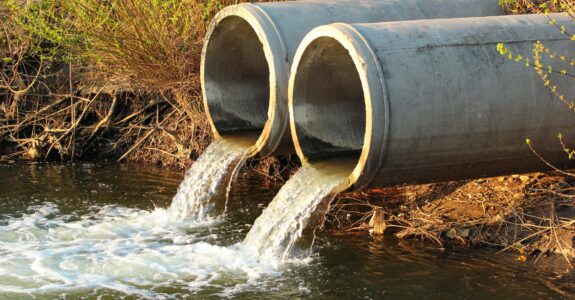
What’s Up With BEN?
March 26, 2024
By: Dr. Mark Rockel and Mike Rockel
There has been an uptick in citizen civil enforcement suits in recent years due, in part, to frustrations and perceptions by regulatory agencies. So-called ‘citizen suits’ alleging noncompliance are filed more frequently than ever under provisions provided in the Clean Water Act (CWA), Clean Air Act, National Environmental Policy Act (NEPA), and the Endangered Species Act (ESA). While enforcement actions brought by individuals and organizations outside of government may be well-meaning, the allegations in civil enforcement actions pose a number of challenges for defendants. In this blog, economists Dr. Mark Rockel and Michael Rockel discuss using the BEN program in the CWA and examine the potential risks and resources companies should be aware of when entering into review and settlement negotiations.
The Clean Water Act and provisions for citizen enforcement
The CWA regulates the discharge of pollutants into U.S. waters. Unless a National Pollutant Discharge Elimination System (NPDES) permit is obtained, it is illegal to release pollutants into navigable waters. To supplement state and federal enforcement of the CWA, Congress empowered citizens to bring their own lawsuits to stop illegal pollution discharges. Citizen suit authority is described in subchapter V, General Provisions, section 505, of the CWA (33 U.S.C. § 1365). The authority granted in § 505(a) allows citizens to alert a company through a 60-day “Notice of (their) Intent to File Suit” over alleged violations of the act. Any citizen may commence a civil action on their behalf against any individuals, corporations, partnerships, or associations who is alleged to be in violation of (a) an effluent standard or limitation under this chapter or (b) an order issued by the USEPA Administrator or a State with respect to a standard or limitation specified in the CWA. Citizens can seek injunctive relief or court orders prohibiting the violation from continuing; civil penalties calculated by the economic benefit a violator may gain from the illegal behavior; and reimbursement of legal costs and attorney fees.
A relatively novel element of citizen enforcement is the opportunity to assess and recover monies representing the economic gains, i.e. benefits, a violator may gain from non-compliance under the law. Most citizen enforcement suits settle, and very few go to trial. Citizen plaintiffs have significant leverage incentivizing violators (defendants) to settle citizen suit claims. Such leverage includes (i) the ability to seek up to $66,712 per day per violation in civil penalties payable to the U.S. Treasury, as well as injunctive relief, and (ii) the ability to recover the citizen group’s attorneys’ fees and litigation expenses if the citizen group “substantially prevails” on its claims. The total costs recoverable in a citizen enforcement matter are often considerably higher than the benefits gained from the violation itself. But how much higher?
Challenges defendants can anticipate when facing CWA citizen suits
Defendants face a number of difficult, and perhaps even surprising, challenges when presented with CWA citizen suits. First, companies should be wary of a false sense of security after receiving a 60-day notice, even if memorandums of agreement are in hand with a state regulatory agency. Citizen suits may claim one or more of the terms contained in such agreements violate the law or misstate the intended purpose of the regulation or permit requirements.
Another significant challenge facing defendants is the absence of plaintiff requirements to show actual damages caused by non-compliance. Plaintiffs, in their 60-day notice, simply need to demonstrate that the defendant is out of compliance with the CWA, often referring to a NPDES permit.
Lastly, citizen enforcement suits can be expensive. Whether it’s the cost of litigation, the amount of the penalty, or the prospects of a negotiated settlement, the total cost to a company faced with a 60-day notice can be very high. The long time horizon often claimed between the date of the alleged violation(s) and eventual compliance adds to the potential enormity of the financial penalty. The combination of these two has the potential to impact a business tremendously.
This is to say that the legal bar for a citizen enforcement action is low, and companies receiving 60-day notices are likely more vulnerable than they might otherwise believe. As the legal case and the timeline for arguments in court unfold, a negotiated financial settlement often becomes more appealing. Settlements are not uncommon in civil enforcement suits.
So, what is the BEN Model?
USEPA developed the BEN computer model in 1984 to calculate the economic gains realized by companies that are alleged to delay or avoid compliance with regulations. The BEN model calculates economic benefit by focusing on the effect that delayed and/or avoided environmental compliance costs have on the violator’s cash flow. Cash flow analysis is a standard and widely accepted technique for evaluating costs and investments. In essence, cash flow calculations focus on the real, “out-of-pocket” cash effects resulting from an expenditure. Three important factors in BEN’s cash flow analysis are inflation, taxation, and the time value of money. The fundamental financial concept of the latter is based on the principle that a dollar today is worth more than a dollar a year from now since today’s dollar can be invested immediately to earn a return over the coming year. BEN uses a discount or compound rate (depending on the direction of the adjustment) that reflects the time value of money. The selection of the appropriate rate and the structure of the discounting and compounding methodology to derive net present value estimates remain significant issues in the BEN model.
Responding to citizen enforcement suits
At trial or in negotiations, plaintiffs often rely on financial experts to provide an independent analysis of the economic benefits the defendant obtained from noncompliance with the CWA. While the BEN Model was originally developed to calculate the economic gains realized by companies that choose to delay or avoid compliance with regulations, it is now extensively used by plaintiffs, just as it has been for several decades by USEPA, to determine a financial starting point for settlement negotiation purposes. There are strategies companies can use to aid in their legal defense and lower the financial burden in settlement negotiations with plaintiffs. Proper identification of the period of noncompliance, discount rate, and pertinent financial information of compliance-related improvements are key first steps to setting a boundary against oversized plaintiff claims. Consideration of penalties paid to the enforcement authority, such as a state EPA, help reduce the perceived penalties as well.
Montrose can help
Economists at Montrose Environmental are experts in evaluating financial data and the input parameters used in the BEN model to calculate the economic benefits of alleged CWA noncompliance and penalties already paid. They consider all facts pertinent to the case to identify baseline or “but for” conditions to reduce the scope of plaintiff claims.
Reach out to learn how these resources can be utilized in your case.

Dr. Mark Rockel,
Senior Principle Economist
Dr. Mark Rockel is an environmental economist with over 40 years of experience in natural resource damage and economic impact assessment. He has successfully used the BEN model to aid and defend clients from Clean Water Act suits.
 Mike Rockel,
Mike Rockel,
Senior Associate Economist
Mike Rockel is an economist and finance professional with ten years of experience using discounted cash flow analysis, benefit-cost analysis, benefit transfer, and EPA tools like the BEN model and EIO-LCA to characterize economic benefits, costs, and damages for numerous industries. He advises companies and their legal representation on the appropriate application and use of economic theory and models.

